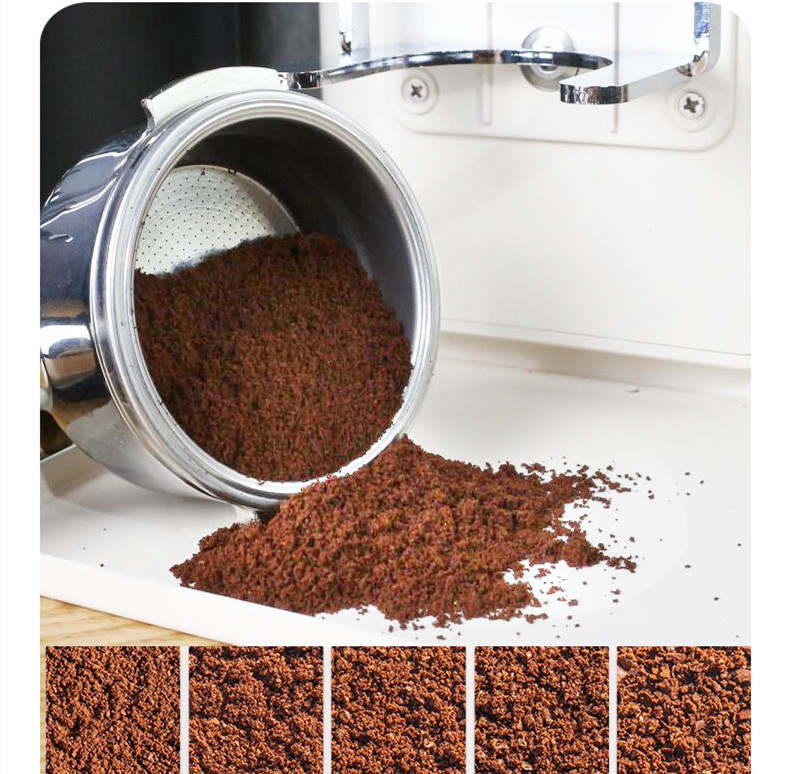Boosting Coffee Production Efficiency Through Strategic Grinding Practices
Streamlining Grind Adjustments for Rapid Brewing Method Transitions
Switching between brewing methods like espresso, pour-over, or French press often requires distinct grind sizes, and slow or imprecise adjustments can bottleneck workflow. Manual grinders with incremental settings or digital models with preset profiles allow baristas to toggle between fine (espresso), medium (drip), and coarse (cold brew) grinds in seconds. For example, a cafe transitioning from morning espresso orders to afternoon pour-overs can recalibrate the grinder once, ensuring consistent particle sizes without delays. This reduces idle time between tasks and keeps service lines moving smoothly, especially during peak hours.
Pre-Setting Grind Sizes for High-Volume Periods
During rush hours, manually adjusting grind settings for every order wastes precious seconds and increases the risk of errors. Programmable grinders enable staff to save preferred settings for different coffees or brewing methods, eliminating guesswork. For instance, a barista can select a “house blend espresso” preset with a single button press, ensuring the grinder produces the correct fine texture instantly. This practice is particularly effective in high-traffic environments where consistency and speed are critical. By minimizing manual interventions, cafes can serve more customers without compromising quality.
Using On-Demand Grinding to Eliminate Pre-Grinding Delays
Pre-grinding coffee in bulk saves time initially but leads to inefficiencies if demand fluctuates. Stale grounds lose aroma and flavor, forcing baristas to discard unused portions or serve subpar coffee. On-demand grinding—where beans are ground only when needed—ensures freshness and reduces waste. Modern grinders with large hoppers and fast burr speeds can produce precise doses in under 10 seconds, matching the pace of manual brewing methods like pour-over. This approach also simplifies inventory management, as staff can grind smaller batches more frequently, avoiding overproduction and spoilage.
Enhancing Grinder Speed Without Sacrificing Consistency
High-speed grinders reduce wait times per order, but过快 (overly aggressive) grinding can generate heat that alters coffee flavors and creates uneven particles. Balancing speed with precision requires optimizing burr design and motor power. Conical burrs, for example, grind beans efficiently while minimizing friction, producing uniform grounds even at faster settings. Pairing these with a powerful yet controlled motor ensures the grinder maintains consistent particle sizes during rapid operation. This allows cafes to serve more customers quickly without compromising extraction quality or flavor profiles.
Implementing Dose-Controlled Grinding for Batch Consistency
Manual dosing—estimating coffee amounts by eye or scoop—leads to inconsistent shot volumes and extraction times, especially in espresso-based drinks. Grinders with built-in scales or programmable dosing systems dispense exact amounts of coffee per order, eliminating variability. For instance, a barista can set the grinder to deliver 18 grams of coffee for each espresso shot, ensuring uniformity across all servings. This automation reduces the need for manual adjustments and re-dosing, speeding up service during busy periods while maintaining quality standards.
Reducing Cleaning and Maintenance Downtime
Frequent cleaning is essential for grinder performance, but lengthy disassembly processes disrupt workflow. Grinders with tool-free access to burrs and chutes allow staff to remove residual grounds and oils in under a minute, minimizing downtime. Some models feature self-cleaning cycles that flush out particles with a single button press, further streamlining maintenance. By keeping the grinder in optimal condition, cafes avoid clogs or malfunctions that could slow down production. Regular, quick cleaning also extends the equipment’s lifespan, reducing long-term replacement costs.
Integrating Grinding Workflows With Barista Routines
Grinding efficiency isn’t just about the machine—it’s also about how staff interact with it. Designing workflows that minimize unnecessary movements or steps can shave seconds off each order. For example, positioning the grinder adjacent to the espresso machine and brewing station reduces the time baristas spend walking between tools. Training staff to grind coffee while preparing other ingredients—such as steaming milk or prepping cups—leverages parallel tasks to accelerate service. These small adjustments compound over time, creating a seamless production line that handles high volumes effortlessly.
Training Staff on Time-Saving Grinding Techniques
Even with advanced equipment, untrained staff may struggle to maximize efficiency. Regular training sessions on grind calibration, dose control, and equipment maintenance empower baristas to operate grinders at peak performance. For instance, teaching them to recognize the sound or texture of an optimally ground batch helps them adjust settings faster without relying on trial and error. Simulated rush-hour drills can also improve their ability to manage multiple orders while maintaining grind quality. Investing in staff skills ensures the grinder’s capabilities are fully utilized, boosting overall productivity.
Leveraging Technology for Real-Time Grinding Analytics
Some modern grinders include sensors or software that track metrics like grind time, dose accuracy, and burr wear. This data helps managers identify bottlenecks or inefficiencies in the grinding process. For example, if the grinder consistently takes longer to produce fine grounds for espresso, it may indicate dull burrs needing replacement. By addressing issues proactively, cafes can prevent unexpected downtime and maintain consistent output. Real-time analytics also enable continuous improvement, as staff can refine their techniques based on objective performance data.
By focusing on grind adjustment speed, dose precision, and workflow integration, cafes can significantly enhance coffee production efficiency. These strategies address both equipment capabilities and human factors, ensuring that every step—from bean to cup—is optimized for speed without sacrificing quality.


